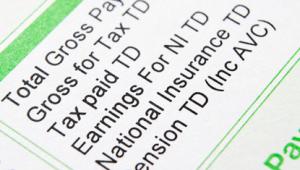24 March 2000
Audit Commission estimates, published this week, show that between 1994 and 1999, employer contributions increased by over £800m. At the same time, the balance in contribution payments between employers and employees shifted from parity to a ratio of almost 2:1.
This money is diverted away from frontline services, said the commission. They predict the situation is set to get worse.
'One of the reasons we are highlighting this is that it's highly likely that it will continue,' said Scott Dickinson, senior manager with the commission. 'Therefore it is important that local authorities start to control the bit they can. That's early health retirement and ill-health retirement.'
Contributions have been forced up by the high levels of early retirement among council employees.
Early retirements fell from 75% of all retirees to 66% in 1998/99. However, the commission found the worst performing councils still have more than 75% of staff leaving early. This has an impact on funding levels, as the council has to make up the shortfall in the fund when a member of staff retires early. Staff contributions are fixed as a proportion of salary.
The government's abolition of Advanced Corporation Tax credits, which now allows the Treasury to claw back some of the investment dividend from councils, and previous legislation which allowed authorities to depreciate funding levels in order to keep community charges down, also had an effect.
In an update to its scathing 1997 report, Retiring nature, which first highlighted the problem, the commission warns that such a record threatens the Department of the Environment, Transport and the Regions' Public Service Agreement targets.
The department has agreed with the Treasury to toughen ill-health targets – which have fallen by only 3% since 1997 – early retirements and sickness absence over a five-year period.
Measures of early and ill-health retirement will also form part of the Best Value performance indicators for local government.
On the plus side, funding levels – the ratio of assets to liabilities – had risen to 96%. However, for the majority of funds, liabilities still exceed assets.
PFmar2000



















